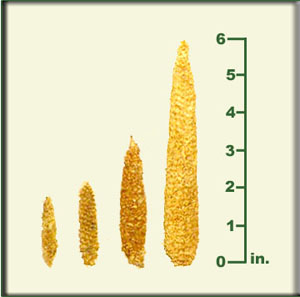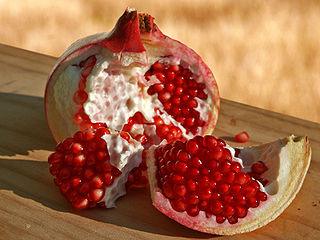
Pomegranates! We all no&luvem, but do we understand them?
Pomegranates are native to a region from Iran to northern India. Pomegranates were brought to the Middle East, South Asia, the Mediterranean, California, and Arizona by humans! (Note that this author is based in Kentucky.) Generations of human selection have made pomegranates much bigger and easier to extract the goods from than they started, although this author can’t find any good photos.
To see what I mean, look at this corn:

Pomegranates look like this:

To eat it, you need to get the seeds away from the pulp. Here’s how I do that:
Here in 21st centuey United States pomegranates are just a weird and yummy food. Apparently it meant something to the greeks:
The mythology of ancient Greece regarded this fruit as the symbol of life, marnage and rebirth in the abduction story of Persephone by Hades, the god of the underworld.
Public Domain Dedication.